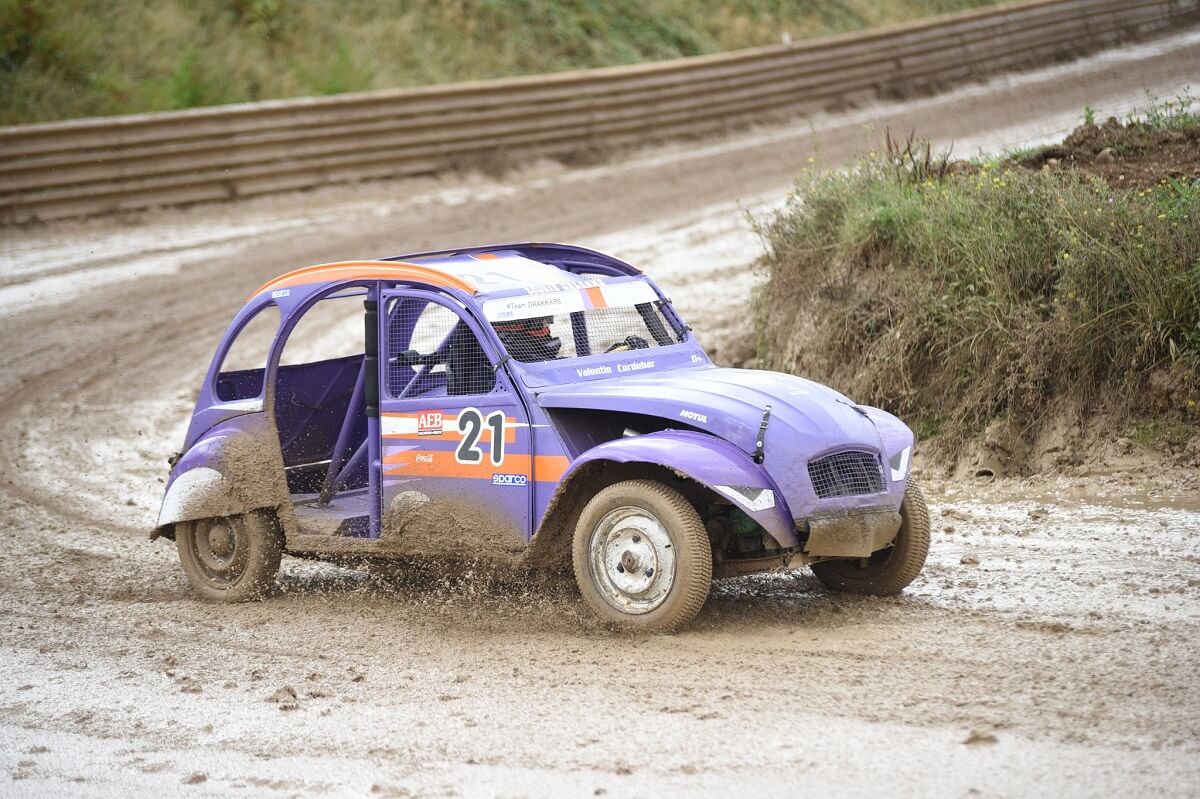How to Get Started in Rallycross in France?
By RobinB on 25 March 2025 RallycrossRallycross is pure adrenaline: ultra-fast races, spectacular grid starts, and intense battles on tracks that combine asphalt and dirt 💥
Unlike traditional rallying, where drivers race one by one against the clock, here it’s true wheel-to-wheel combat on a closed circuit. Each heat is short, explosive, and full of twists and turns 💪
But rallycross isn’t just about the show. It’s also an excellent springboard for young drivers looking to start their motorsport careers. In France, two championships are specially designed for them:
- 🏆 The FFSA French Junior Rallycross Championship, open to 16-28 year olds, contested behind the wheel of a Clio RX Junior developed by Renault Sport.
- 🚺 The FFSA French Women’s Cup, a series dedicated to female drivers aged 16 and over, where all compete in a Renault Twingo R1.
So, how do you enter these championships? What budget should you plan for? What are the steps to progress, and what opportunities await the most talented drivers?
🔎 All the answers in this complete guide to starting out in rallycross in France!
What is Rallycross?
Rallycross was born in 1967 in England, almost by accident. That year, the RAC Rally was canceled due to a foot-and-mouth disease outbreak, forcing organizers to improvise a new type of competition on a track combining asphalt and dirt. The success was immediate. The discipline quickly spread to Scandinavia and then throughout Europe 🌍
In France, rallycross made its debut in 1976 with the first race organized in Lohéac, a village in Brittany that quickly became an iconic venue for the sport. Due to growing enthusiasm from both spectators and drivers, an official French Championship was launched as early as 1977.
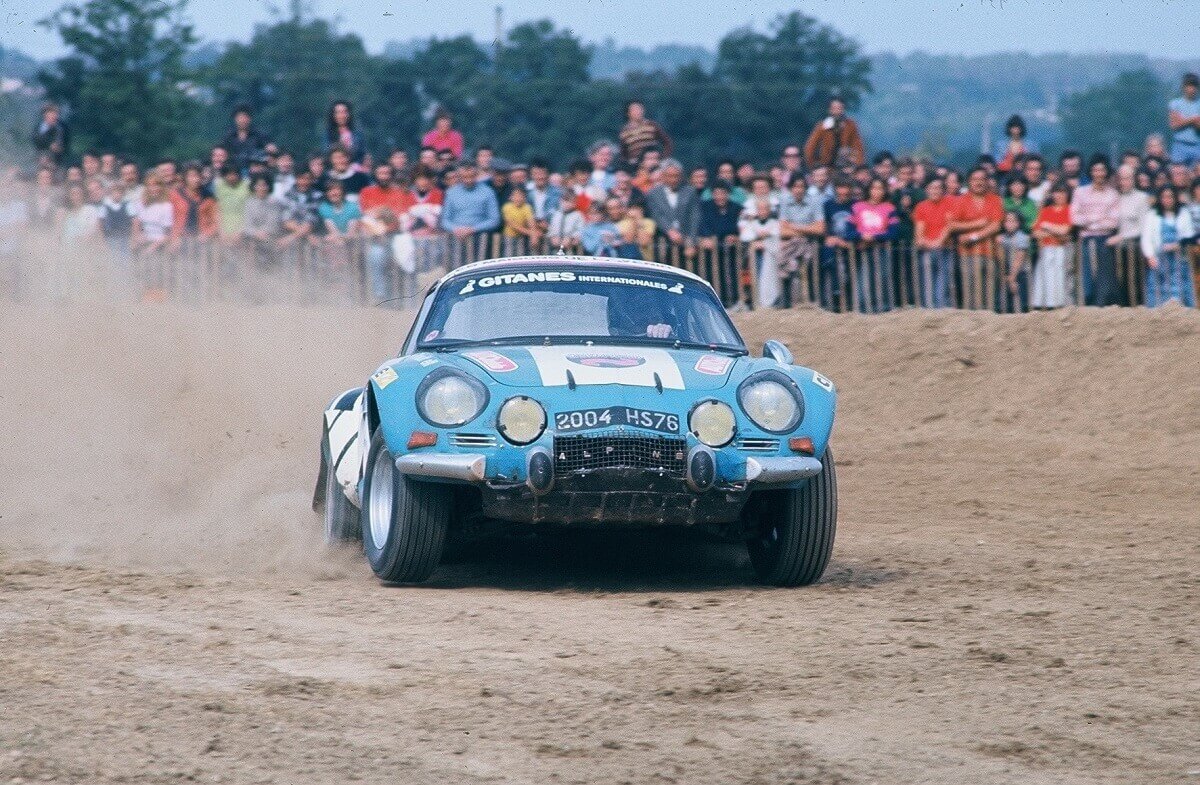
The Basics of Rallycross
Rallycross takes place on short circuits, generally between 800 and 1,200 meters, alternating between dirt and asphalt. Unlike rallying, where drivers start one by one against the clock, here they go head-to-head in a pack, with close contact right from the start 😈
Each race begins with a grid start, with five cars side by side in the qualifiers and eight in the final, spread across three rows. These heats are short and intense, lasting between 4 and 7 laps, which encourages close battles and spectacular overtakes. The slightest mistake can be very costly.
ℹ️ A key strategic element in rallycross is the “Joker Lap”. Present on every circuit, this slightly longer detour must be taken once per race by each driver. Using it at the right moment is a real tactical game: if done correctly, it can help avoid traffic or surprise a rival to gain a position.
🎯 Why Choose Rallycross to Start in Motorsport?
Rallycross is a true driving school. Its unique format allows drivers to develop essential skills, with race situations that are common in top-level motorsport disciplines.
- Versatile learning: alternating between asphalt and dirt constantly forces drivers to adapt to changing grip conditions.
- Managing contact, starts, and stress: unlike rallying, here drivers line up side by side. Managing pressure, securing a good starting position, and executing clean overtakes are crucial.
- Intense race pace: short heats and multiple races over a weekend help drivers progress quickly while learning to stay calm under pressure.
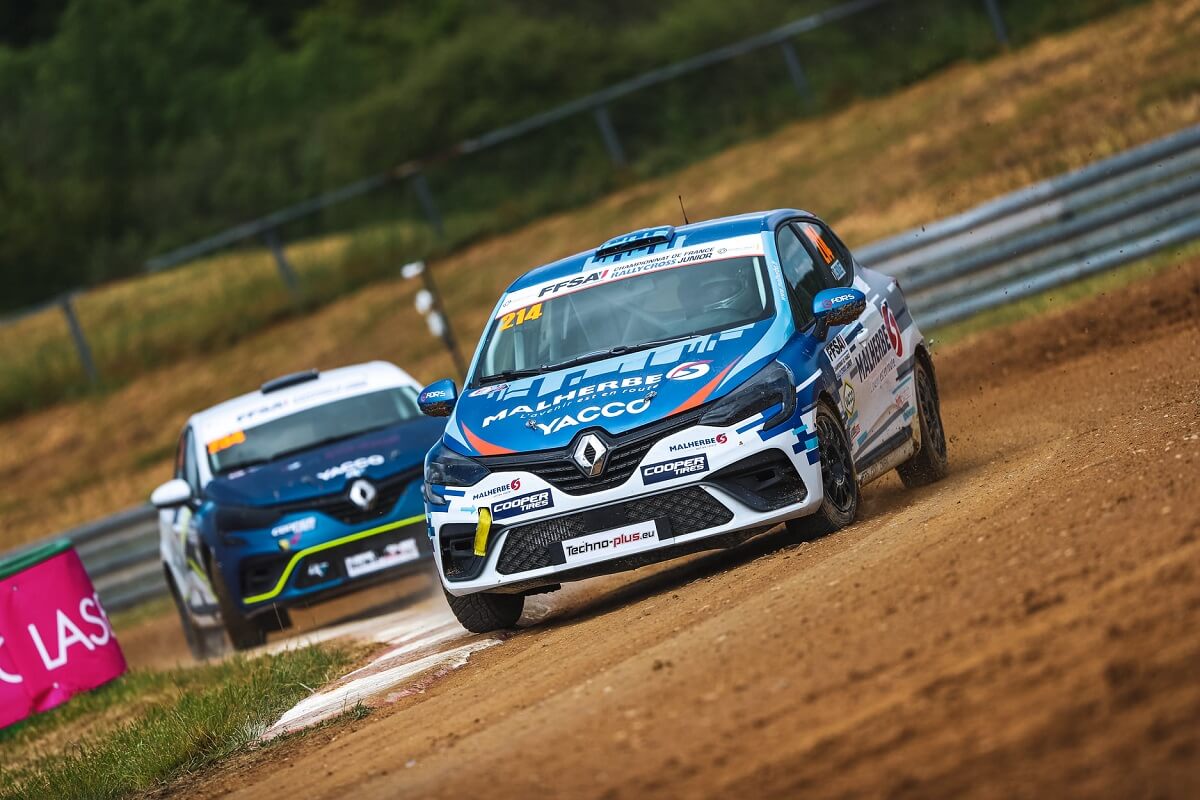
In addition to this accelerated learning, rallycross is a relatively “accessible” discipline, with championships designed for young drivers such as the FFSA French Junior Championship and the FFSA French Women’s Cup. Equal opportunity is reinforced, as all cars in these series are identical 👍
See also: "How much does it cost to rent a rally car?"
Presentation of the French Rallycross Championship
Recognized as one of the most competitive rallycross championships in Europe, the French Rallycross Championship attracts both seasoned drivers and young talents looking to make a name for themselves. It is organized by the FFSA (Fédération Française du Sport Automobile) and coordinated by AFOR (French Association of Rallycross Organizers).
📆 2025 French Rallycross Championship Calendar
In 2025, the French Rallycross Championship will take place on 9 different circuits, each with its own characteristics. Some are fast with long asphalt sections, while others are more technical with pronounced dirt portions.
- 🔸 Lessay-Manche (50) – May 3/4 → A fast layout where overtaking is frequent.
- 🔸 Faleyras (33) – May 31/June 1 → A hilly circuit, appreciated by drivers for its rhythm changes.
- 🔸 Châteauroux / Les Tourneix (36) – June 21/22 → A demanding track with a very prominent dirt section.
- 🔸 Touraine / Pont de Ruan (37) – July 5/6 → A twisty track where managing the Joker Lap is crucial.
- 🔸 Kerlabo / Cohiniac (22) – July 26/27 → One of the most technical circuits of the championship.
- 🔸 Lohéac (35) – August 29/31 → The flagship event of the season, attracting thousands of spectators.
- 🔸 Mayenne / Maurice FORGET (53) – September 13/14 → A fast layout where starting position is key.
- 🔸 Essay / Les Ducs (61) – September 27/28 → A circuit appreciated for its dirt/asphalt transitions.
- 🔸 Dreux (28) – October 11/12 → Championship finale, where everything can be decided on the Ouest Parisien / Philippe Chanoine circuit.
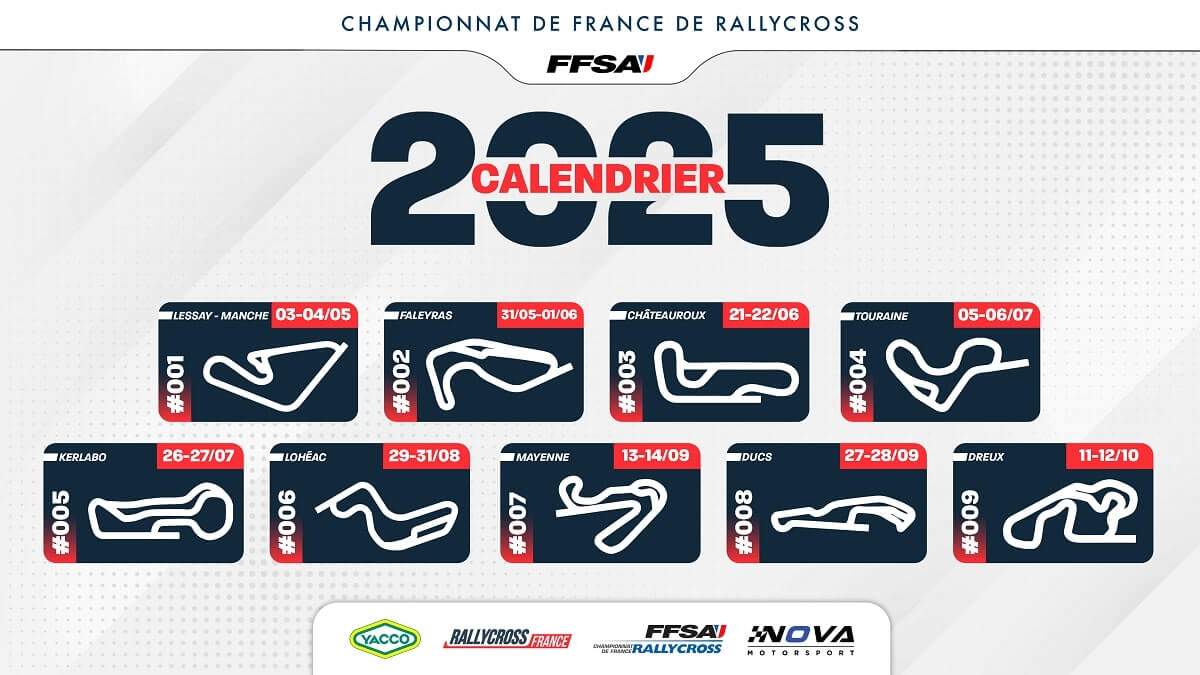
The Different Categories of the French Rallycross Championship
The French Rallycross Championship is made up of several categories, suited to different driver levels and budgets. Among the main categories, we find:
- Supercar: The top rallycross category, featuring 600-horsepower beasts with all-wheel drive and lightning-fast acceleration, capable of reaching 0 to 100 km/h in under 2 seconds.
- Super 1600: A category reserved for light, nimble cars with front-wheel drive only. Ideal for young drivers aiming to progress before stepping up to the higher classes.
- Division 3 (T3F): Designed for rear-wheel-drive touring cars, this category features vehicles with tubular chassis covered by plastic or composite bodies. These cars, often powered by naturally aspirated V6 engines up to 3.5 liters, offer an excellent power-to-weight ratio and great freedom in terms of modifications.
- Division 4 (F2000): Created for front-wheel-drive touring cars, this category is a more accessible alternative for amateur drivers. The vehicles entered are homologated in Group F2000, with engines ranging from 1,600 to 2,000 cm³, all with two-wheel drive. This category is also popular in rallying and hill climb racing, allowing drivers to diversify their disciplines.
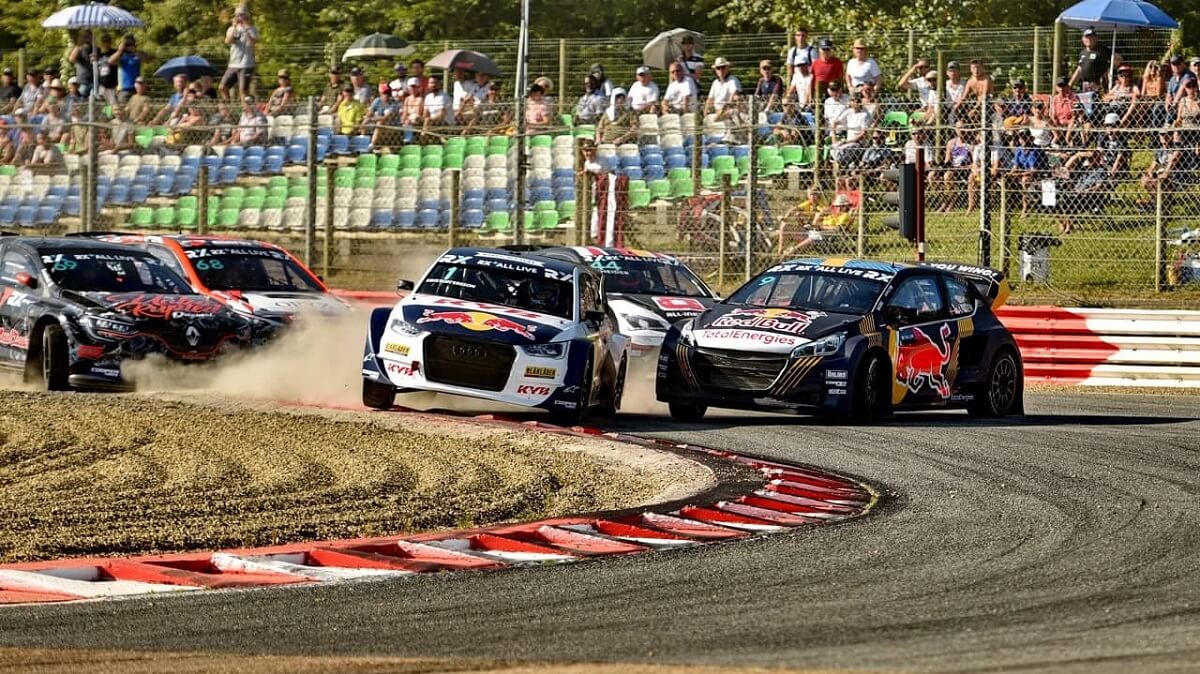
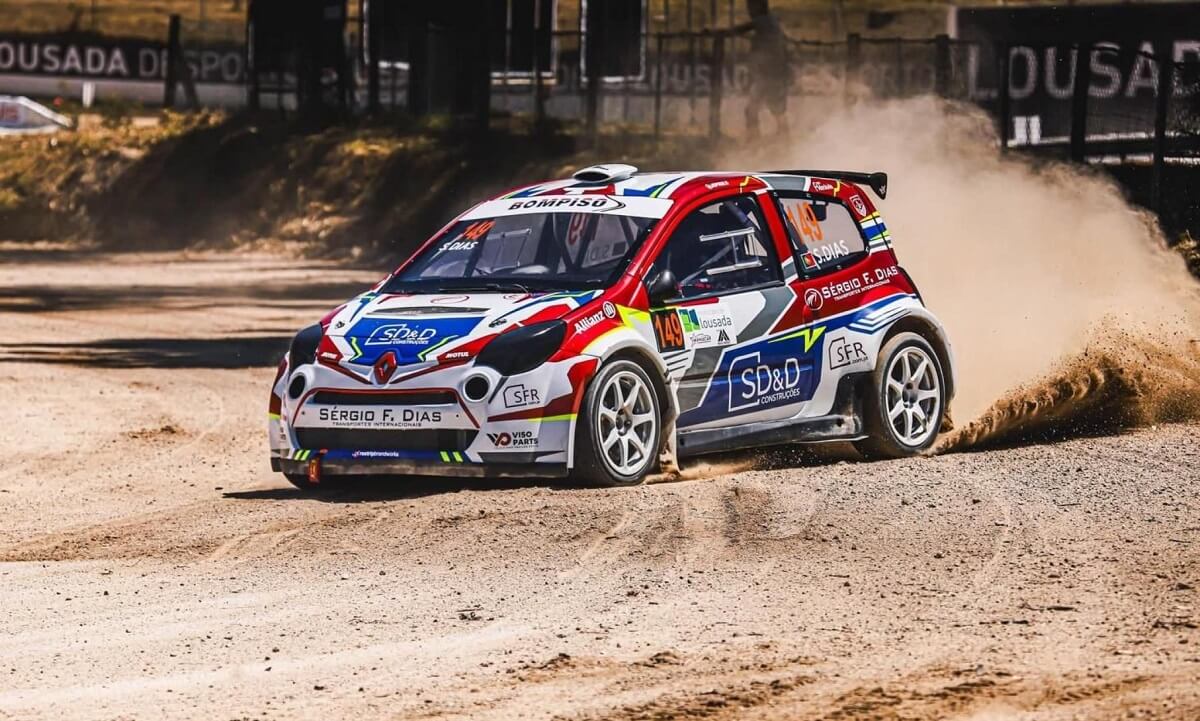
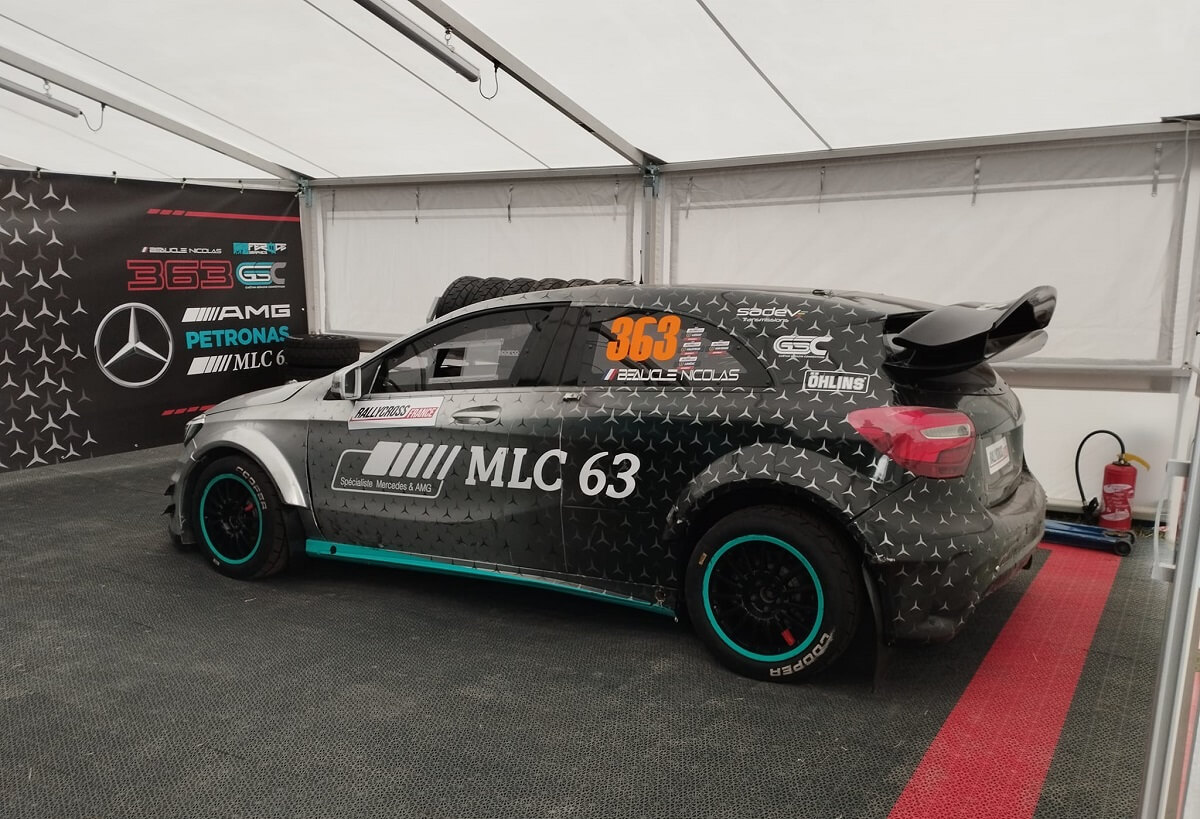
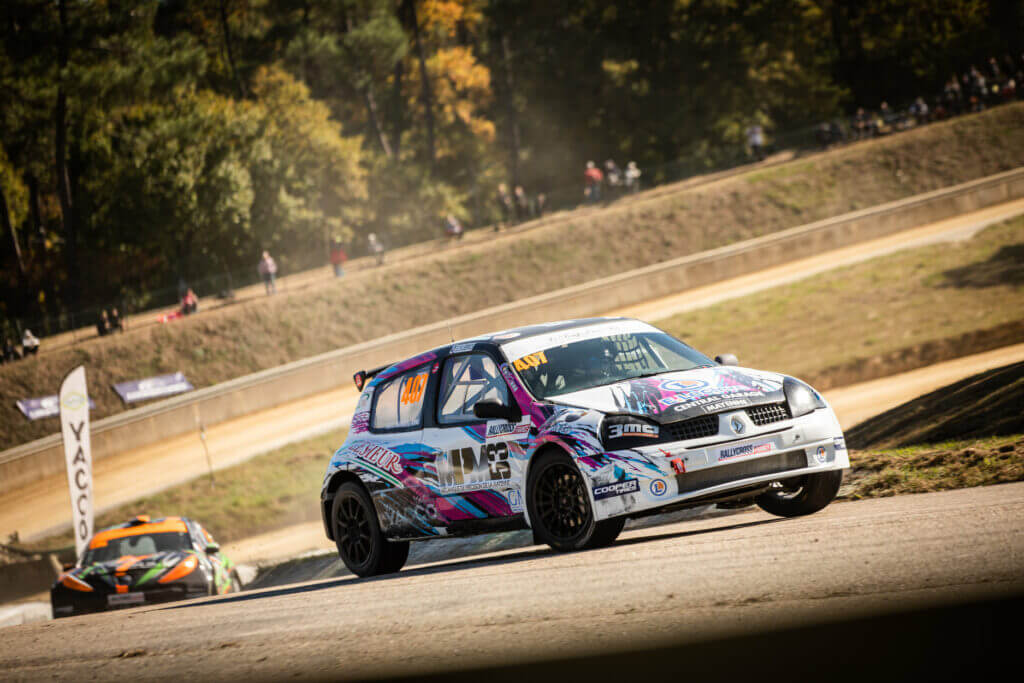
While these categories are often dominated by experienced drivers, young talents can start in series specially designed for them:
- ➡️ FFSA French Junior Championship, open from age 16, lets young drivers compete on equal footing in identical cars: the Clio RX Junior.
At season’s end, the winner earned a Super 1600 seat—an ideal springboard to higher levels.(⚠️ EDIT: no longer the case in 2025) - ➡️ FFSA Women’s French Cup is reserved for female drivers from age 16, all racing a single‑make Renault Twingo RX.
The winner previously received a spot in the FFSA Junior Championship to move up the ranks.(⚠️ EDIT: no longer the case in 2025)
These two series are ideal for taking your first steps in competition. Thanks to identical cars for all participants, equal opportunity is guaranteed, putting the driver’s talent at the heart of performance. With a controlled budget and a real perspective for progression, they are among the best ways to climb the rallycross ladder 📈
📌 How a Rallycross Race Weekend Unfolds
Each weekend of the French Rallycross Championship follows a well-defined structure, with several key phases to determine the finalists and the winner.
🟢 Saturday Morning: Free and Timed Practice
The weekend kicks off with several timed free practice sessions, allowing drivers to discover the track and fine-tune their setups.
ℹ️ In 2025, a major new feature adds importance to these sessions: the fastest driver secures the Pole Position Piecesetpneus.com, giving them a strategic advantage for the first qualifying heat. Additionally, the top five times will earn extra points towards the championship.
🟢 Saturday Afternoon: Qualifying Heats 1 and 2
The qualifying heats are the core of the competition. They allow drivers to accumulate points to advance to the semi-finals.
🔹 Qualifying Heat Format:
- 4 heats of 4 laps with 5 cars on track (grid starts)
- Ranking based on total race time, not just finishing position.
- The top 16 drivers after the four heats qualify for the semi-finals.
🟢 Sunday Morning: Warm-up + Qualifying Heats 3 and 4
Sunday morning begins with a warm-up (free practice session) allowing drivers to get back into rhythm before moving on to the last two qualifying heats.
Since the Pole Position Piecesetpneus.com was already awarded the previous day, drivers now need to focus on consistency to secure a spot in the semi-finals.
🟢 Sunday Afternoon: Semi-Finals and Final
Qualified drivers battle it out in the final phases where every mistake can be costly.
🔹 Final Phase Format:
✅ Semi-Finals:
- The top 16 drivers from the qualifying heats are split into 2 semi-finals of 8 cars each.
- 6-lap race where only the top 4 from each semi-final advance to the grand final.
✅ Final:
- 8 cars on track for 7 laps.
- The first driver to cross the finish line is declared the weekend’s winner.
🔀 The Joker Lap: A Strategic Element
Each circuit features a section called the "Joker Lap", a longer detour that adds 2 to 3 seconds to the lap time. All drivers must take it once per race, adding an essential tactical element.
💡 Two possible strategies:
- Taking it early in the race helps avoid contact and traffic.
- Taking it late in the race can surprise an opponent or protect a position by playing with time gaps.
You can check the rules on the rallycrossfrance website: https://www.rallycrossfrance.com/en/rallycross/regles-du-jeu/
See also: "All you need to know about Autocross and Sprint Car in France"
The FFSA French Junior Championship: The Springboard to the Top Level
If you are between 16 and 28 years old and dream of a career in rallycross, the FFSA French Junior Championship is the best way to start. Designed as a true stepping stone to higher categories, it puts all drivers on equal footing thanks to identical cars and a structured framework.
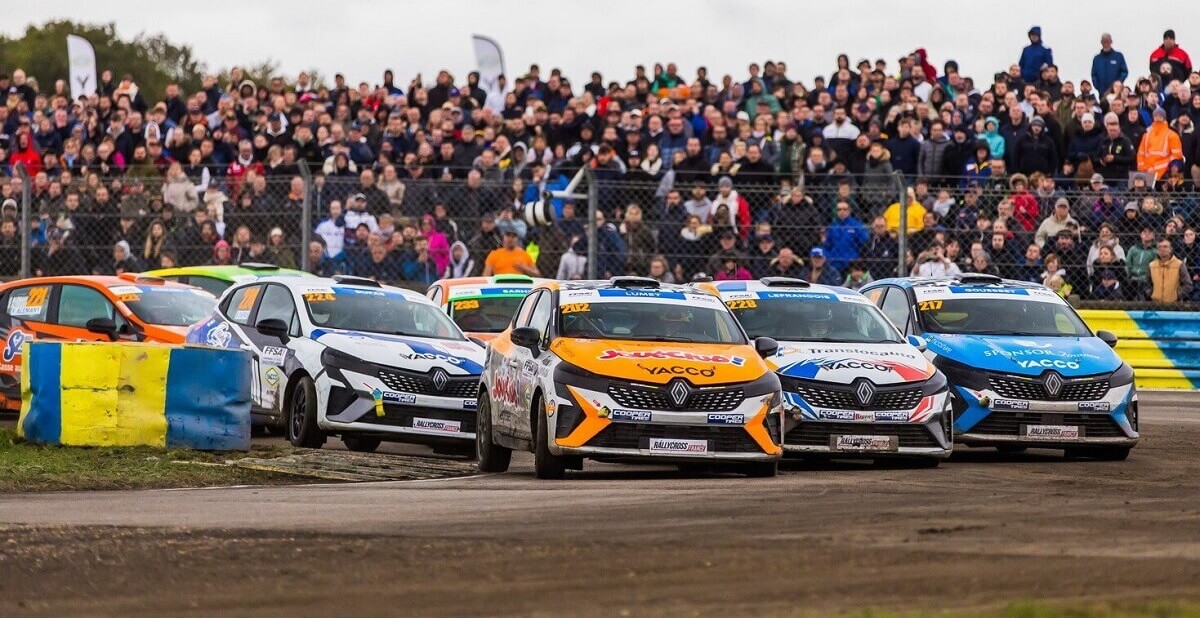
Who Can Participate?
The FFSA French Junior Championship is open to young drivers, from the age of 16, who want to learn the discipline and compete against other emerging talents.
Why Choose the FFSA Junior Championship?
- An accessible competition, with identical cars for everyone, where talent is the only differentiator.
- Controlled costs, with no need to invest in mechanical development.
- A real springboard to the top level
- Intensive learning, thanks to frequent grid starts and short heats.
The Car: Renault Clio RX Junior
All drivers entered in the championship compete in the Renault Clio RX, specifically developed for the discipline by Renault Sport.
🔹 Technical Specifications:
- 1.3 Turbo engine developing 180 horsepower.
- Weight of 1080 kg (empty).
- Sadev ST82 5-speed sequential gearbox.
- Front-wheel drive (FWD).
- Suspension and brakes adapted for both dirt and asphalt racing.
- Specific RX kit to ensure performance and fairness among competitors.
This Clio RX is light, agile, and educational, allowing drivers to acquire excellent control on mixed surfaces and in pack racing.
Onboard Footage of the Clio RX Junior Final at the Lessay Circuit 🔥
How Much Does It Cost? 💰
The Junior Championship remains one of the most accessible rallycross series, although it still requires a significant investment.
📌 Estimated Budget:
- Race weekend rental: around €6,000 to €7,000 excluding VAT.
- New car price: €49,900 excluding VAT + €4,134 excluding VAT for the RX kit.
- Other expenses to consider:: accommodation and travel, driver equipment, license and entry fees, potential damage (bodywork and mechanical not covered)...
While the cost may seem high, it is still much lower than the budgets needed to compete in higher categories.
The FFSA French Women’s Cup: An Opportunity for Female Drivers
While rallycross is a mixed discipline where men and women can compete together, the FFSA French Women’s Cup was created to encourage more women to enter competition. Open from the age of 16, this series allows female drivers to compete against one another, gain experience, and progress to the FFSA French Junior Championship.
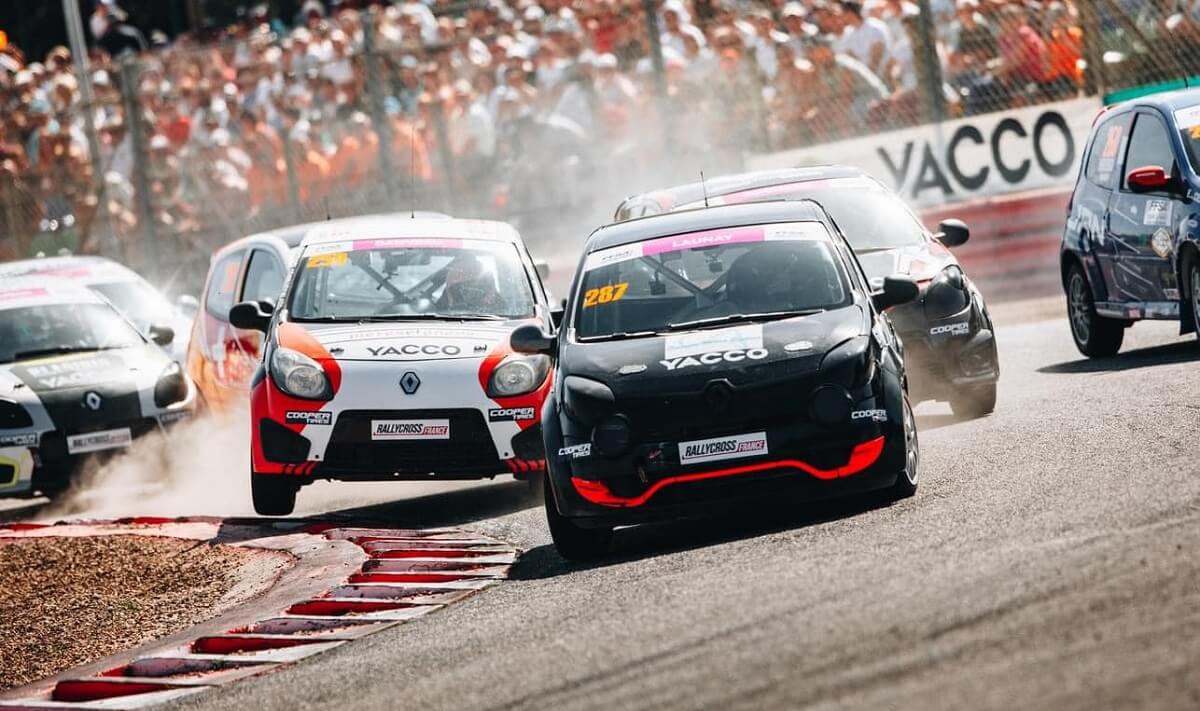
Why a Women’s Cup in Rallycross? ♀️
Motorsport has long been male-dominated, but the number of female drivers increases every year. The goal of this cup is to:
- Make rallycross more accessible to women through a dedicated category.
- Provide a competitive and educational environment before facing experienced drivers.
- Offer a path to the Junior Championship.
This initiative helps identify and promote new female talents, with a clear path to higher categories.
The Car: Renault Twingo RX
All participants race with the Renault Twingo R1/RX, equipped for competition.
🔹 Technical Specifications:
- 1.6 naturally aspirated engine developing 133 horsepower.
- Empty weight of 980 kg.
- Gearbox: Renault type JR5, 5 speeds + reverse gear.
- Front-wheel drive (2WD).
- Renault Sport kit specifically for rallycross.
- Adapted for mixed circuits (dirt + asphalt).
The Twingo RX is an easy-to-handle yet demanding car, ideal for learning the basics of rallycross and progressing towards more powerful models.
What Budget Should You Plan For? 💰
Taking part in the FFSA Women’s Cup represents a more affordable budget compared to the Junior Championship. By joining a rental team, each race weekend costs around €3,000 excluding VAT, not including additional expenses such as the license, race entry fees, accommodation, and travel. As in the Junior Championship, drivers are responsible for any mechanical or bodywork repairs in the event of damage.
To reduce costs, it is possible to purchase a used Twingo RX, currently priced between €10,000 and €15,000. By handling logistics and maintenance independently, a race weekend can then cost between €1,200 and €1,500 including VAT, covering travel expenses, entry fees (€360 in 2025), tires, and food.
Why Enter the FFSA Women’s Cup?
The FFSA Women’s Cup is more than a competition—it’s a real springboard for female drivers. It’s the perfect training ground before taking on mixed categories such as the FFSA Junior Championship.
Thanks to this series, several young drivers have been able to move up to higher categories and continue their rallycross progression 👍
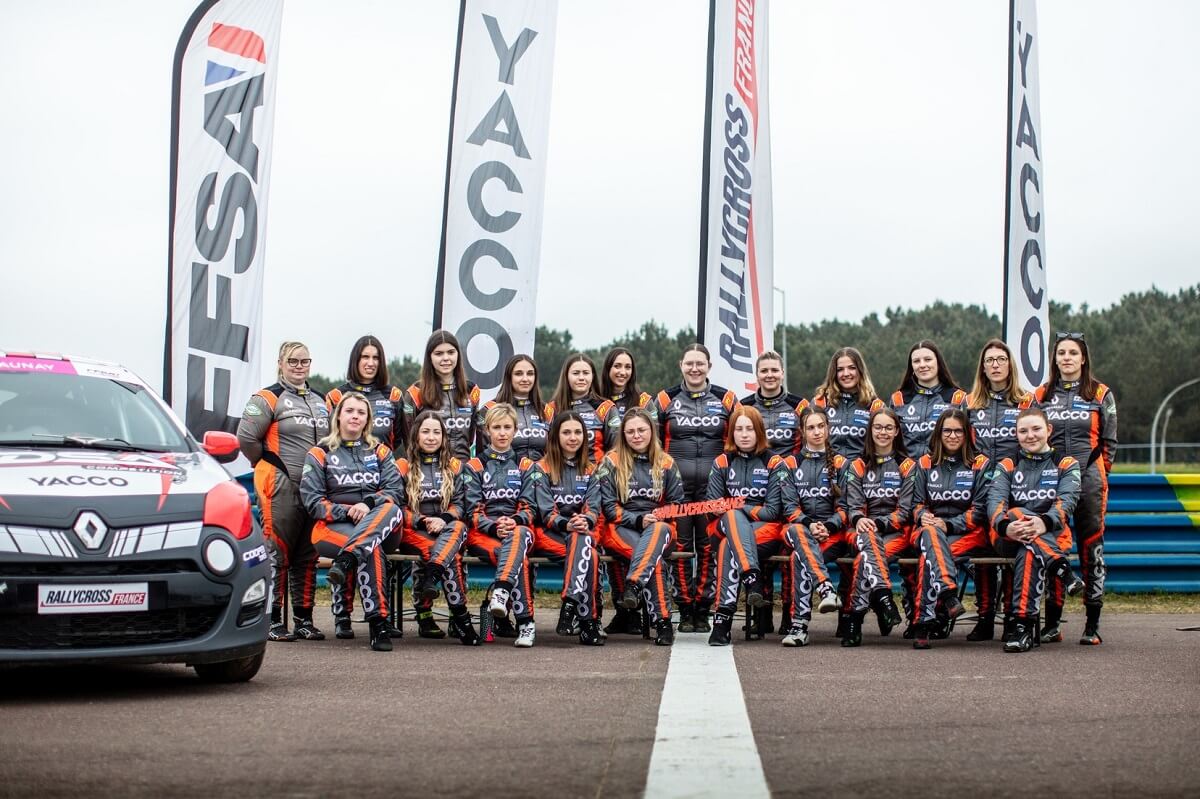
Women’s Cup or Junior Championship: Which Path to Choose?
Starting out in rallycross as a female driver comes down to two options: the Women’s Cup or the Junior Championship. If you are a beginner, the Women’s Cup is an excellent entry point, with a more affordable budget 😋
However, if you already have experience in karting or motorsport, going straight into the Junior Championship will allow you to face the best young rallycross talents.
What’s Next? Opportunities After Junior or the Women’s Cup
Once you have proven yourself in the FFSA French Junior Championship or the FFSA Women’s Cup, several options are available to continue your rallycross journey. The goal is to move up to more competitive categories with more powerful cars and potentially consider an international career.
The French Super 1600 Championship: The Logical Next Step
Super 1600 is the natural progression after a successful season in a junior series.
🔹 Why Super 1600?
- More powerful cars (around 220 to 250 hp) but still front-wheel drive.
- A highly competitive category that serves as a stepping stone to the top level.
- Present on the same circuits as the French Rallycross Championship, with an identical format.
Drivers who perform well in Super 1600 can then consider moving to Supercar or exploring opportunities across Europe.
Supercar: The Top Rallycross Category
Supercar represents the pinnacle of rallycross: 600 horsepower, all-wheel drive, and acceleration worthy of a single-seater, going from 0 to 100 km/h in under 2 seconds. It’s even quicker than a Formula 1 car in this area!
🔥 Why Aim for Supercar?
- It’s rallycross’s showcase, with strong media exposure.
- It’s one of the most spectacular disciplines in motorsport.
- Several French drivers have shined internationally after a career in Supercar.
However, the budgets are sky-high: a full season in Supercar can cost several hundred thousand euros, and a single weekend costs around €30,000 excluding VAT in rental 💰
➡️ See all rallycross cars for sale or rent on GoToTheGrid 😋
French Drivers Who Made It Internationally
The French Rallycross Championship is a true springboard to international competitions like the Euro RX and World RX. Thanks to their performances and the support of sponsors or manufacturers, several French drivers have successfully gone global.
Here are a few examples:
- Davy Jeanney: French Champion in 2010 driving a Citroën Xsara WRC, he became European vice-champion in 2013 before joining World RX in 2014. He scored two victories in 2015 with Team Peugeot-Hansen.
- Cyril Raymond: French Super 1600 Champion in 2014, he then dominated the RX2 category with two world titles in 2016 and 2017. He moved up to the Supercar category in 2019 with GC Kompetition.
- Jean-Baptiste Dubourg: French Super 1600 Champion in 2013 driving a Renault Clio S1600, he finished fifth in the European Championship in 2015 before making his World RX debut in 2017.
- Jérôme Grosset-Janin: French Champion in 2013, he later impressed in the European Championship, where he secured two runner-up finishes in 2015 and 2016.
- Steven Bossard: Recently crowned French rallycross champion, he made his World RX debut during the season finale in Turkey.
These career paths show that a successful season in France can be a real springboard to the international stage. With strong performances and the right support, the French Championship remains a gateway to the world’s top rallycross competitions 👍
Conclusion: A True Pathway to Progress in Rallycross
The FFSA Junior Championship and FFSA Women’s Cup are excellent springboards to start and make a name for yourself in rallycross. With a relatively accessible budget and a structured competition, these series allow you to learn quickly and move up to more competitive categories.
Whether you are an ambitious young driver or a passionate woman looking to carve out a space in rallycross, these series give you a real shot at competing. All that’s left is to take the plunge! 🚀



